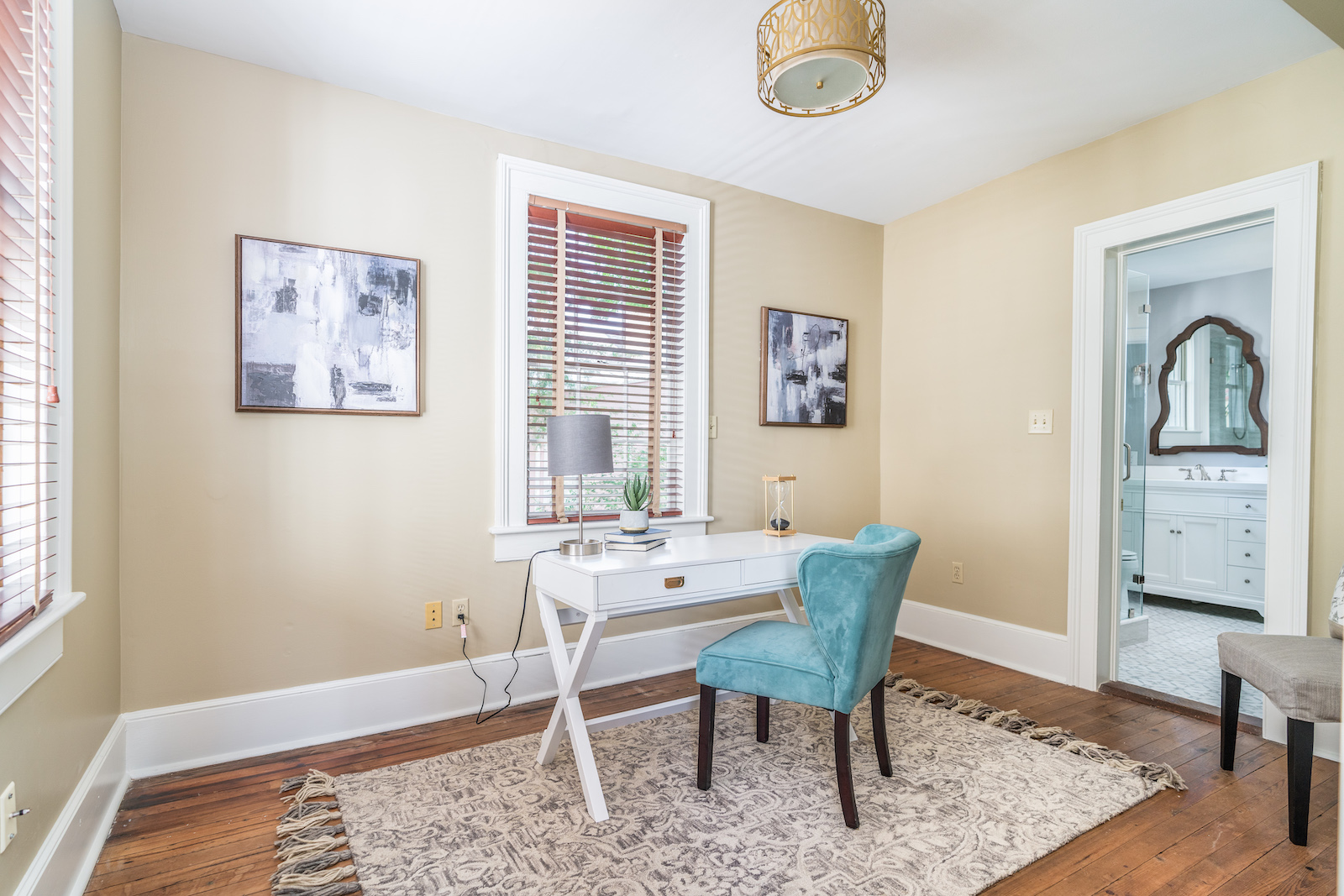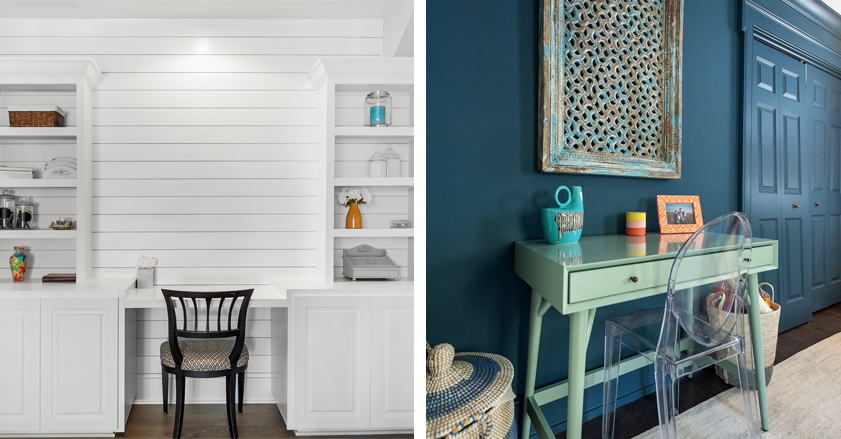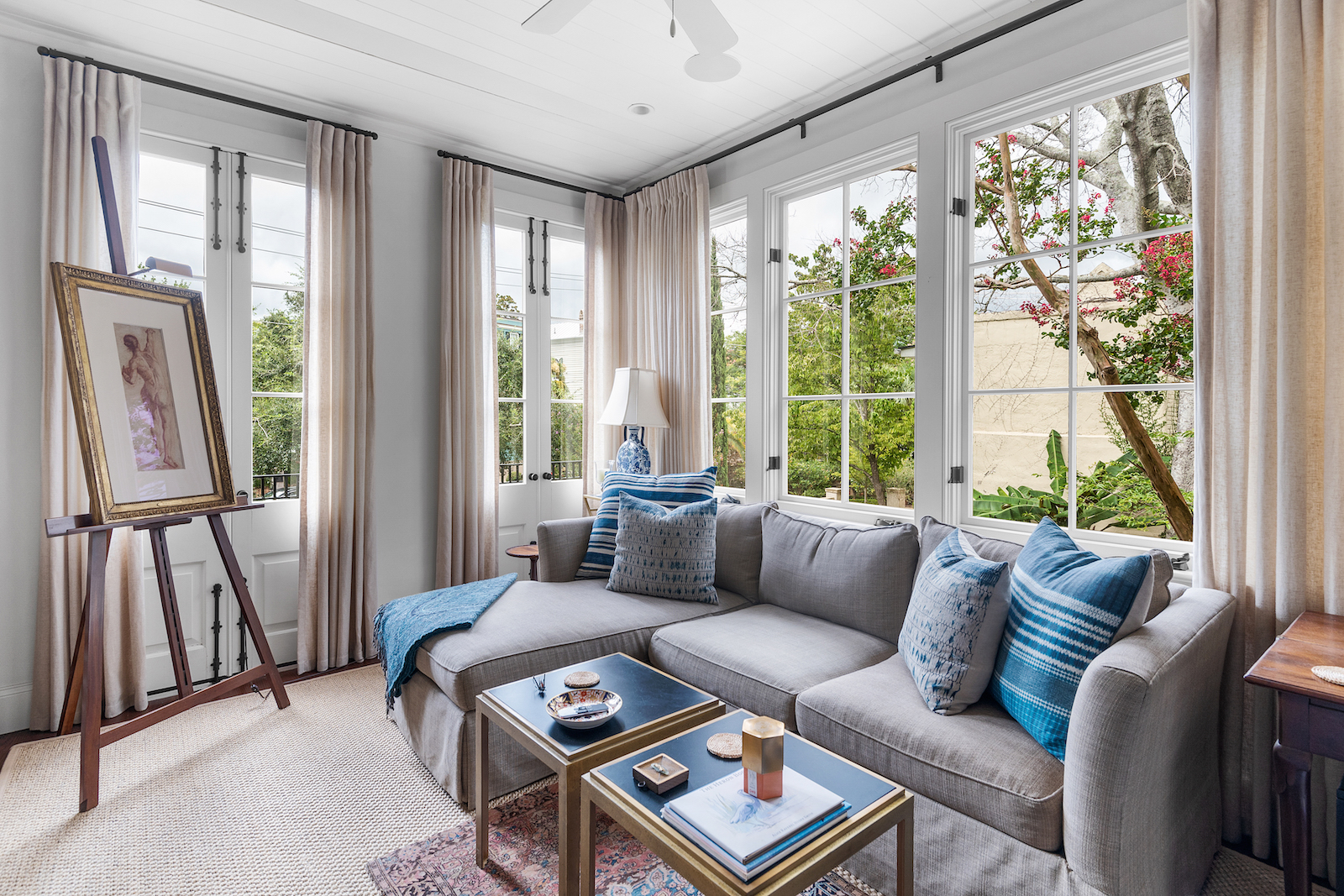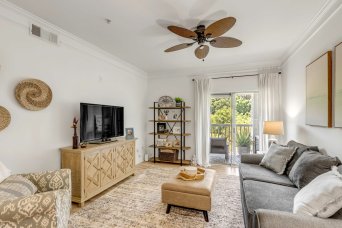
E-learning is becoming increasingly common with many parents opting to enroll their children in virtual school this fall. In addition to home office spaces becoming more in-demand, at-home learning spaces are becoming more of a necessity for children as well. From a cozy reading corner to an organized homework station, follow these tips to create a fun and functional learning space for your child.
Choose A Workspace. Almost any room could be transformed into a workspace – it may be helpful to give your child a say in where they would like to set up shop. Older children may prefer to work from a desk in their bedroom, but younger children who need assistance more often may work best in the living or dining room. If your child is working in a main living space of your home, set up a designated desk, table or cozy corner they can claim as their own.
Create A Zoom Room. An emerging real estate trend, the “zoom room” is often defined as a quiet room with an interesting background that serves as the perfect space for video calls. Get your children involved in setting up their own “zoom room” for e-learning by creating a colorful backdrop of posters, coloring pages, or artwork.
Keep It Organized. A decluttered at-home learning space is important for productivity and concentration. Keep desks clear with labeled containers and filing systems and create more storage space with shelving, baskets and fabric drawers where children can stash school supplies.

Minimize Distractions. Consider the orientation of your child’s workspace and if they have attention difficulties, it may be best to have their desk face a wall rather than a window or open room. If siblings are having trouble sharing a space and concentrating, use tall bookshelves as desk dividers. Exercise balls and other moveable seating options can help energetic children concentrate while they listen and work.
Consider Multiple Workzones. Different activities may call for different seating arrangements. A cozy chair with good lighting is perfect for poring over class reading material, and a desk tucked in the corner of the dining room may be ideal for your child who wants to be where the action is while they finish their math homework. Whatever you decide to do, be sure to ask your child for their input and ideas – their at-home learning spaces will work better for them if they have a say in the set up.

Sources:





Leave a Reply